How to Volunteer in Rural Kerala and Make an Impact
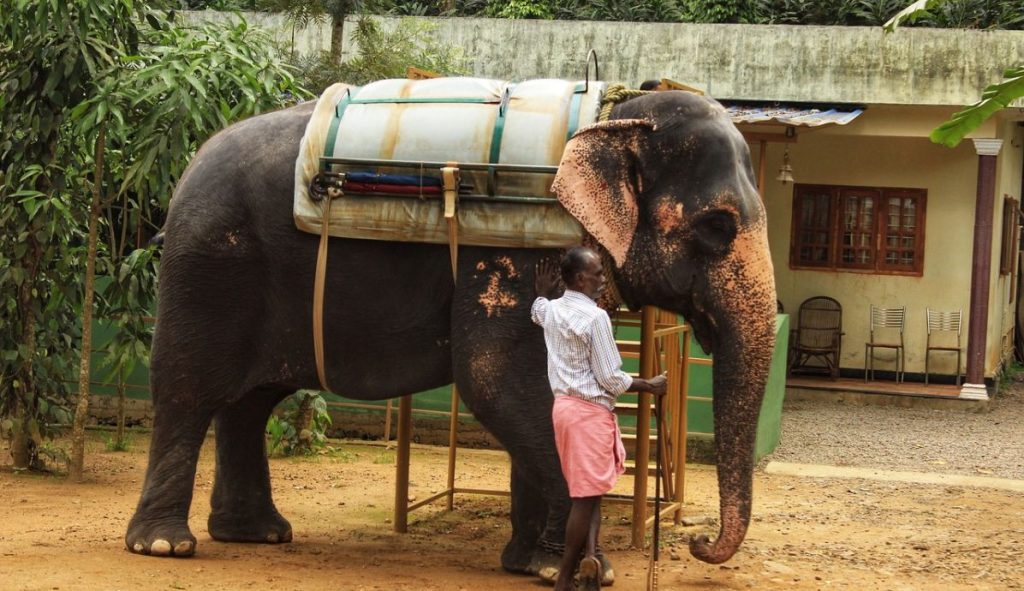
When most people think of Kerala, they imagine houseboats on backwaters or tea gardens on misty hills. But Kerala’s real charm lies in its villages — where culture, traditions, and warm hospitality create unforgettable experiences. Volunteering in rural Kerala not only enriches your trip but also makes a meaningful difference in local lives. This guide will help you make your Kerala itinerary memorable & meaningful for life. 1. Why to Choose Rural Kerala for Volunteering? Volunteering in Kerala’s rural areas gives visitors an opportunity to experience the state apart from experiencing populated tourist locations. The villages offer authentic culture & traditions, friendly hospitality by locals, and untold tales. Volunteering gives you authentic village experiences by immersing you in daily life, unlike traditional Kerala packages. There are multiple ways to contribute—teaching children, supporting women’s groups, or helping in eco-projects. The community is strengthened by each and every action, no matter how big or small it is. Pro Tip: Before you enroll, it is advised to better look for reputable Kerala tour companies or regional NGOs that run such volunteer events. 2. Top Volunteering Opportunities in Rural Kerala (Teaching, Farming, Healthcare & More) There are numerous volunteer opportunities available in Kerala. Amongst all, the most significant opportunities are as follows: Teaching Programs: To support educational initiatives, volunteering to teach computer skills, English or any other subjects in schools is one way to volunteer for the right cause. Sustainable Farming: Encourage organic & sustainable farming projects over inorganic farming in the hill stations of Kerala. Support for Healthcare: To volunteer for the healthcare department, reach out to remote clinics. Help out local medical staff . Eco-Tourism Projects: Support sustainable tourism activities. Encourage eco-friendly responsible travel & sustainable tourism in villages. These kinds of opportunities, which combine leisure and purpose, are trip-worthy to be included in your customized Kerala travel packages. Pro Tip: Select projects as per your preferred skills. There are a lot of activities to be indulged in like from Teaching, farming, to healthcare—choose where you can truly add real value. 3. Best Places to Volunteer in Kerala: Wayanad, Alleppey, Munnar & Kumarakom Your preferred interests will determine the location for volunteering. Each and every region has something special to offer: Wayanad: It is known for its sustainable farming initiatives and for tribal communities that support sustainability.. Alleppey: It defines the combination of ecotourism run by the locals and beautiful backwaters. Munnar: Volunteer on tea plantations and organic farms in the hills. Kumarakom: This area is home to eco-friendly initiatives and bird sanctuaries. Each destination adds depth to your Kerala travel guide, making it more meaningful than a typical Kerala road trip. It has something or the other to experience & learn while volunteering at the same time. Pro Tip: Speak with your Kerala tour planner to mix volunteering with sightseeing for a balanced experience. 4. How to Plan Your Volunteer Trip To ensure a rewarding volunteer experience ,careful examination & better planning is what you all need .Here are some of the key steps that will add value to your volunteer trip, if followed: Decide your duration—whether you want to go for short-term or long-term. To make travel plans to Kerala, get in touch with travel agencies. To combine volunteering with travel, pick trustworthy & informative Kerala tour companies. Mentally get ready for simple authentic living and cultural differences. A reputable Kerala planner can create a fulfilling itinerary that incorporates impact exploration. Pro Tip: Keep a journal when you travel. Writing down your experiences fosters reflection and strengthens bonds with others 5. Unique Experiences To Experience While Volunteering In Kerala, volunteering is more about the reward that is to gain than it is to give back. Anticipate more on following activities that will add value to your volunteering tour : Take part in customary celebrations. During homestays, discover Keralan cuisine. Learn about Ayurvedic methods in rural areas. Hike to undiscovered waterfalls accompanied by locals. These immersive experiences turn your trip into lifelong unforgettable memories, in contrast to generic Kerala family tours or vacation packages with no volunteering . Pro Tip: Carry a travel journal. Documenting your experiences will deepen your connection and help you reflect all the memories to re-live the moment. 6. Balancing Travel and Volunteering altogether Many tourists are curious about how to combine volunteering and leisure time for a better trip. Integration is crucial. By combining volunteer work with touring Kerala’s hill stations, backwaters, and cultural sites ,you can make a significant contribution without missing out on famous locations. Volunteering days can be added to Kerala vacation packages. This guarantees that your Kerala vacation package combines enjoyment and purpose along with a lot of learning thoroughly. Pro Tip: Take advantage of the weekends to explore the destination. For the ideal balance, commit to volunteering during the week days. FAQs Q1. Does volunteering in Kerala require any prior experience? No. Beginners are welcome in many projects. More important than skill is enthusiasm and transparency. Q2. Is it possible to combine volunteering with a honeymoon tour package to Kerala? Indeed. It is definitely possible to add personalized volunteering along with a honeymoon tour package. Q3. How do I find reliable travel agents for Kerala trips for volunteering? Seek out authorized Kerala tour companies that collaborate with neighborhood associations or non-profits communities. Q4. Is volunteering in rural Kerala safe for solo travelers? Yes. Villages in Kerala are known for their hospitality and safety. Just stay connected with your Kerala tour guide. Q5. Can a quick Kerala vacation package include volunteering? Indeed. Volunteering for even two or three days can make your Kerala vacation impactful & memorable. Final Thoughts Your journey becomes more than just a vacation when you volunteer in rural Kerala. It’s a worthwhile opportunity to change lives, embrace customs, and come back with meaningful tales. Whether you are traveling by road, taking a family vacation, or using a Kerala tour operator, volunteering adds value to your trip that will last. If you want your Kerala volunteer journey filled
Hidden Beaches in Kerala You Won’t Find in Guidebooks
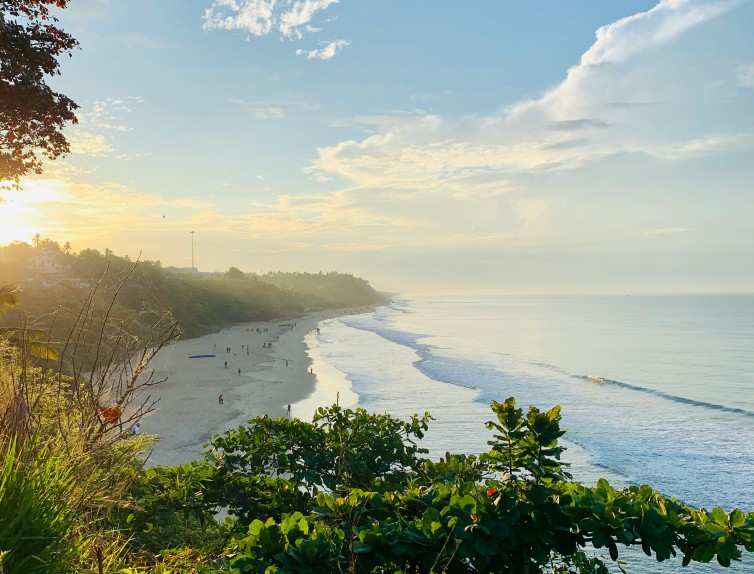
Sure, everyone talks about Kerala’s houseboats and those picture-perfect backwaters, but let’s be honest, sometimes you just want to breathe. No crowds, no noise, just you and the sound of waves. That’s the Kerala we’re diving into here. Tucked away from the touristy chaos are beaches so quiet, so untouched, it almost feels like they were waiting just for you. Whether you’re chasing a moment of peace, a little romance, or just some time to reset, these hidden beaches in Kerala might be exactly what your soul’s been craving. No filters, no hype, just real, raw beauty. 1. Pozhiyoor Beach – The Vibe Check You Didn’t Know You Needed Right where Kerala meets Tamil Nadu lies this underrated slice of peace: Pozhiyoor Beach. Think golden sands, quiet backwaters, and zero chaos. It’s where the Neyyar River casually flows into the Arabian Sea, and honestly? It’s giving main character energy. No vendors yelling, no selfie crowds—just you, the waves, and your thoughts (or your playlist). Pro Tip: Pull up on a weekday evening to have the whole place practically to yourself. Pack your own snacks and drinks, though there are no cafés, just pure unplugged vibes. 2. Kappil Beach – Varkala’s Chill Cousin That No One Talks About Okay, so you’ve done Varkala. But just 15 mins down the road is Kappil Beach, and trust us, it’s got that “where-has-this-been-all-my-life” vibe. Picture this: sea on one side, calm backwaters on the other, palm trees swaying like they’re in a slow-mo music video. It’s peaceful, raw, and totally off the radar. Perfect for quiet journaling moments, cinematic drone shots, or pretending you’re in a nature documentary. Pro Tip: Rent a scooter in Varkala and ride down for the day. Stop at the cliff viewpoints for some killer IG stories before you vibe out at Kappil. 3. Thaikadappuram Beach – Where Baby Turtles Steal the Show Okay, picture this: you’re chilling on a quiet beach in Kasaragod, and suddenly tiny baby turtles are making their way to the ocean. Yeah, it’s that kind of magical. Thaikadappuram Beach is totally off the tourist radar, but come turtle hatching season, it turns into a real-life nature doc minus the crowd. Pro Tip: Want to catch the turtle hatchlings? Plan your trip between September and November. It’s wholesome, it’s rare, and yes, it’ll totally melt your heart. Just don’t be that person; stay quiet, no flash photography, and let nature do its thing. 4. Marari Pozhi—The Chill Spot You Didn’t Know You Needed Sure, Marari Beach gets all the hype, but just sneak a little further and boom, you’re in Marari Pozhi, its quieter, introverted sibling. This part’s got zero crowd stress, soft sand that basically begs for a beach nap, and palms swaying like they’re on a lo-fi playlist. Pro Tip: Pack a mat, a good book, or that journal you’ve been ignoring. This is the place to zone out and vibe with yourself—no interruptions, no drama 5. Puthenpuram Beach – For That Raw, Real Kerala Energy Tucked near Cherai but totally off the beaten path, Puthenthope Beach is the kind of untouched beauty that makes you feel like you’ve stumbled into a postcard. You’ll see fishermen casting their nets and feel like you’re part of something real, not curated. Pro Tip: Wake up early (yes, we know it’s hard) and catch the locals at work. It’s pure, it’s peaceful, and the sunrise pics? Pure magic. 6. Kizhunna Ezhara Beach – Underrated Bliss You Didn’t Know You Needed Tucked near Kannur, Kizhunna and Ezhara are twin beaches that feel like a perfectly curated playlist—low-key, scenic, and effortlessly chill. Picture golden sands, swaying coconut trees, and sunsets that look like they’ve been filtered IRL. Pro Tip: Stay in a nearby homestay for that authentic Kerala vibe. You’ll get homemade meals and maybe even some insider tips on hidden sunrise spots that don’t make it to Instagram. 7. Valiathura Pier Beach—All About That Ocean Mood Close to Trivandrum but never overhyped, Valiathura Pier Beach is for people who just want to feel something (and not in a depressing way). The giant pier stretching into the sea gives major dramatic flair, and watching the waves slam during monsoon season? Totally therapeutic. Pro Tip: Visit during the rains if you want full-on ocean power vibes, but stay safe and don’t get too close to the edge. The goal is to heal, not fly. FAQs How do I add hidden beaches to my Kerala trip planner? Use your Kerala trip planner to slot beach days between popular stops like Alleppey, Varkala, and Kochi. These beaches are often short detours from well-known towns, so you won’t have to go out of your way. Is it safe to visit the hidden beaches in Kerala alone or as a couple? Totally! Most hidden beaches in Kerala are safe, peaceful, and less crowded, making them ideal for solo travelers and romantic getaways. Just follow general safety tips and go during daylight hours. Can I include these secret beaches in a 7-day Kerala itinerary? Yes! Whether you’re using a DIY Kerala travel planner or working with a travel agency, it’s easy to fit 2–3 of these beaches into a week-long Kerala itinerary. Kappil or Marari are great near Alleppey; Kuzhupilly works near Kochi. Are there budget stays near these offbeat beaches in Kerala? Absolutely. Your Kerala vacation guide isn’t complete without mentioning cozy homestays, beach huts, and backpacker hostels near beaches like Marari or Kizhunna. Perfect for that chill, no-frills vibe. What’s the best time to visit hidden beaches in Kerala? November to February is peak season for beach weather—sunny, breezy, and not too humid. Your Kerala trip planner should ideally avoid monsoon months (June–August) if beach time is a priority. Can a Kerala travel planner help me find hidden beaches no one talks about? Yes! The best Kerala travel planners or local guides know exactly where the secret gems are, often ones not listed on typical websites. A planner can also help with transport,
Leh Ladakh tour package guide: must see places & must do experiences
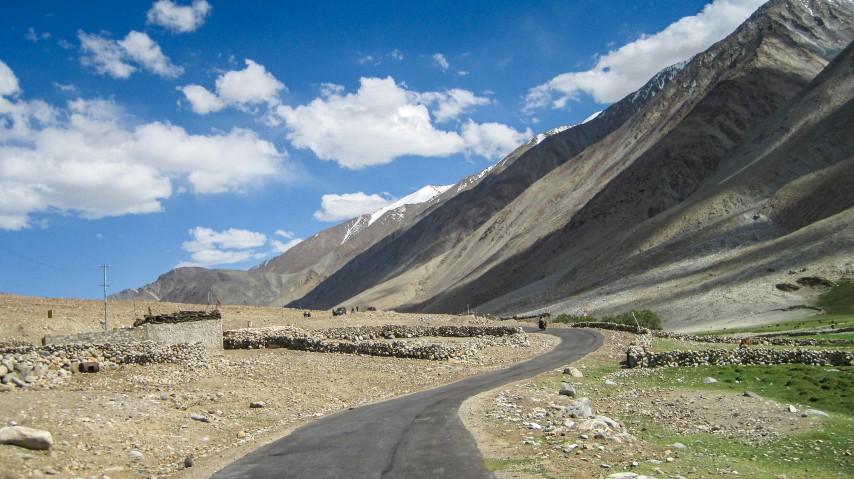
Imagine this: You’re standing by a shimmering blue lake at 14,000 feet, snow-capped peaks all around, prayer flags fluttering in the breeze, and not a single honk or email in sight. That’s Ladakh for you. If this high-altitude dream has been on your bucket list for a while, it’s time to stop scrolling and start planning. Whether you’re chasing roads less traveled, dreaming of a romantic getaway, or plotting the ultimate road trip with friends, this guide to the perfect Leh Ladakh trip package has you covered. Let’s break it down: what to see, what to do, and what to book to make this trip unforgettable. Places That Belong on Your Ladakh Hitlist Leh Town Why Visit: This is the heart of Ladakh—a high-altitude town surrounded by the Himalayas. It’s where culture, history, and comfort meet. Attractions: Shanti Stupa, Leh Palace, Namgyal Tsemo Monastery, vibrant local bazaars, and Tibetan cafés. Pro Tip: Spend at least 2 days in Leh to acclimatize before heading to higher-altitude regions. Nubra Valley Why Visit: A high-altitude desert nestled between mountains, known for sand dunes and double-humped camels. Attractions: Diskit Monastery, Hunder Sand Dunes, Turtuk Village (a cultural gem near the Indo-Pak border). Pro Tip: Visit Turtuk for a unique cultural experience, and stay in a Nubra homestay for a local touch. Pangong Lake Why Visit: India’s most iconic high-altitude lake, famous for its surreal blue shades. Attractions: Camping by the lake, sunrise photography, and stargazing. Pro Tip: There’s no mobile network here—download offline maps and carry power backups. Tso Moriri Why Visit: A more peaceful and less touristy alternative to Pangong is Tso Moriri, ideal for meditation and nature lovers. Attractions: Bird watching, Karzok village, and raw natural beauty. Pro Tip: Visit this last on your itinerary, as it’s one of the highest points and requires full acclimatization. Magnetic Hill & Gurudwara Pathar Sahib Why Visit: A quirky stop where vehicles appear to roll uphill. The Gurudwara offers peace and hot tea. Attractions: Magnetic illusion, confluence of Zanskar & Indus rivers. Pro Tip: Combine this with Alchi Monastery or Lamayuru on a short half-day trip from Leh. Hemis & Thiksey Monasteries Why Visit: These monasteries showcase Ladakh’s rich spiritual life, architecture, and Himalayan rituals. Attractions: Giant Maitreya Buddha at Thiksey, Hemis Festival (if visiting in June/July), morning chants. Pro Tip: Visit Thiksey at sunrise for incredible light and fewer tourists. Must-Do Experiences That Make It All Worth It Road Tripping on the World’s Highest Highways Trust us—nothing compares to riding through Ladakh with the wind in your hair and the majestic Himalayas unfolding before you. Whether you’re traveling solo or with a group, this is one adventure that absolutely deserves a spot on your bucket list. Stargazing Like Never Before In Ladakh, the stars don’t twinkle; they dazzle. Pangong, Hanle, and Tso Moriri offer skies so clear, you’ll forget the city even exists. Monastery Mornings Wake up early, sip butter tea, and watch monks chant in candlelight. It’s peace you can feel. Camp By the Lake A blanket of stars, a hot cup of Maggi, and the gentle sound of waves while camping by Pangong or Tso Moriri are the stuff dreams are made of. Acclimatization & Altitude Sickness: What to Know Stay 48 hours in Leh before heading to higher altitudes. Hydrate constantly—3–4 liters per day. Avoid alcohol and heavy meals the first few days. Watch for AMS symptoms like dizziness and nausea. Carry Diamox (after consulting a doctor) or use oxygen cylinders if needed. Packing Essentials for Ladakh Thermal wear, fleece layers, and down jackets Sunglasses, SPF 50+ sunscreen, lip balm Sturdy trekking shoes Reusable water bottle, energy bars Power bank and offline maps Copies of permits and ID proofs What Should Your Leh Ladakh Package Really Include? Let’s be honest: booking a trip to Ladakh isn’t just about ticking boxes; it’s about making sure you’re comfortable, safe, and actually enjoying every moment. Here’s what to look for before you hit that Book Now button: A Good Place to Crash After a long day of road tripping and sightseeing, you’ll want a cozy bed, not a sleeping bag in the cold. Look for clean, comfy hotels in Leh and lakeside camps in Nubra or Pangong with proper bedding and warm food. Reliable Wheels Ladakh’s roads can get rough (we’re talking mountain passes and hairpin bends), so SUVs like a Scorpio or Innova are the way to go. Bonus points if the driver’s a local; they know the terrain like the back of their hand. Meals Sorted Most good packages include breakfast and dinner, and trust us, you’ll want that sorted when you’re at 14,000 feet and the nearest café is 50 km away. Plus, who doesn’t love hot Maggi or butter tea after a long drive? Oxygen on Standby The altitude can sneak up on you, especially in the first couple of days. Packages that include oxygen support or emergency protocols are always a smart pick. Better safe than breathless. A Bit of Wiggle Room The best kind of travel? The kind that doesn’t feel rushed. Go for a customizable itinerary, one that lets you explore at your pace, maybe squeeze in a monastery you just heard about, or stay an extra night by the lake. Leh Ladakh Itinerary: 7-Day Travel Plan Day 1: Arrive in Leh, rest, and light exploration (Shanti Stupa, market) Day 2: Leh sightseeing—Hall of Fame, Leh Palace, monasteries Day 3: Drive to Nubra via Khardung La, explore Diskit & Hunder Day 4: Visit Turtuk or enjoy sand dunes & monastery visit Day 5: Drive to Pangong Lake via Shyok route, overnight camp Day 6: Return to Leh via Chang La; stop at Hemis Monastery Day 7: Local shopping or visit Magnetic Hill & Pathar Sahib before departure FAQs About Leh Ladakh 2025 1. Do I need any permits to visit Leh Ladakh in 2025? Yes, Inner Line Permits (ILPs) are required for Indian citizens and Protected Area Permits (PAPs) for foreign nationals. These are needed for areas like
Top 8 Cheap Workation Places in India: Hidden Gems for Remote Work!!

Imagine sipping chai in the hills while replying to emails or wrapping up a presentation as waves crash outside your window. In India, this dream can be a reality without burning a hole in your pocket. Several hidden workation destinations along with Kasol and Jibhi provide similar charm combined with fewer tourists and a more relaxed environment. Let us explore these secluded retreats that unite business productivity with wandering exploration. Serene views for workation 1. Jibhi, Himachal Pradesh Jibhi rests within the Banjar Valley, where it sits quietly beside pine forests and houses built from wood. It’s a budget-friendly spot with good internet, perfect for a serene remote work experience. The cool climate and scenic views make working here feel like a retreat. This destination provides perfect conditions for people who desire connectivity while pursuing digital detoxification. Attractions: Jalori Pass, Chehni Kothi, and Shringa Rishi Temple. Things to Do: Hike to Serolsar Lake, nature walks, trout fishing, camping, bird watching. 2. Ziro Valley, Arunachal Pradesh Ziro Valley provides creative individuals with a calm environment of tribal society embedded within verdant scenery. The destination offers affordability together with its distant location, which allows you to disconnect while accessing limited internet services. The calm, foggy mornings are perfect for focused writing or thinking. You will experience comfortable accommodations in local hospitality, which provides affordable rates. Attractions: Apatani tribal villages, Dolo Mando Hill, and Pine Grove. Things to Do: Trekking, attending the Ziro Music Festival, birdwatching, cycling, and local cuisine tasting. 3. Panchgani, Maharashtra This hill town in the Western Ghats is less crowded but equally beautiful compared to Mahabaleshwar. You can enjoy cheap accommodation in family homes and strong cellular connections and serenity in the area to achieve quick relaxation. The place offers year-round favorable weather conditions that make it ideal for extended workation stays. The location connects easily to both Pune and Mumbai. Attractions: Table Land, Parsi Point, Sydney Point. Things to Do: Paragliding, horse riding, strawberry farm visits, heritage walks, and nature photography. 4. Gokarna, Karnataka Gokarna is a peaceful beach town offering affordable accommodation with Wi-Fi access. Unlike Goa, it has a laid-back vibe that’s perfect for long work stays. The location provides an environment that brings physical healing together with creativity. The town offers affordable costs while containing many natural landscapes. Attractions: Om Beach, Kudle Beach, Mahabaleshwar Temple, and Half Moon Beach. Things to Do: Beach yoga, hiking trails, cafe hopping, sunset walks, and surfing. 5. Majuli, Assam Majuli, a river island on the Brahmaputra, offers a unique cultural and scenic workation experience. The cost of living is low, and the environment is perfect for a digital detox workation experience. Little money is needed to survive because the environment supports digital detoxification processes. This place stands out due to its traditional arts along with nature-friendly living practices. Writers and creative professionals who want seclusion as a working environment will find this location suitable. Attractions: Vaishnavite Satras (monasteries), tribal villages, and Auniati Satra. Things to Do: Mask-making workshops, birdwatching, cycling, cultural exploration, pottery. 6. Tirthan Valley, Himachal Pradesh Tirthan is an untouched valley perfect for nature lovers and remote workers. The attractive cottages and tranquil environment in this location create an environment for intense focus and rest. The locations have reliable mobile coverage together with a few homestays that offer Wi-Fi to users. Visitors can enjoy relaxation by the riverbanks of this location. Attractions: Great Himalayan National Park, waterfalls, Raghupur Fort. Things to Do: Fishing, trekking, bonfires, local food tasting, riverside picnics. 7. Varkala, Kerala Varkala blends beach beauty with wellness, ideal for remote professionals seeking relaxation and work-life balance. The scenic seaside restaurants provide exceptional views together with reliable internet connection options for office tasks. Varkala unites serene beach appeal with sacred tranquility. Perfect for health-conscious travelers. Attractions: Varkala Beach, Papanasam Beach, Anjengo Fort, Sivagiri Mutt. Things to Do: Ayurvedic therapies, backwater boating, yoga, cliff walking, and temple visits. 8. Kasol, Himachal Pradesh Nestled in Parvati Valley, Kasol offers cheap hostels, great food, and a vibrant remote work community. The combination of peace and connectedness makes this location a popular choice for workation purposes. Tourists can find plenty of inexpensive lodgings that offer panoramic mountain vistas. The place serves as the starting point for multiple trekking routes. Attractions: Kheerganga, Manikaran, Tosh Village, and Parvati River. Things to Do: Riverside camping, hot springs visit, local market shopping, hiking, and bonfires. FREQUENTLY ASKED QUESTIONS (FAQs): Q1. Are these cheap workation places in India suitable for long-term stays? Yes, most spots offer affordable homestays, hostels, and guesthouses with stable internet and basic comforts, making them great for extended remote work periods. Q2. Which is the best workation destination in India with reliable internet connectivity? Jibhi, Varkala, and Kasol consistently provide good Wi-Fi or mobile network speeds, making them ideal for video calls, uploads, and regular work tasks. Q3. Is it safe for solo travelers to work remotely from these places? Yes, they are generally safe, especially for solo travelers, with friendly locals and a growing number of digital nomads and backpackers in the community. Q4. What’s the best season to go on a workation in India? Summer (March to June) is great for mountain escapes like Himachal, while winter (October to March) is ideal for coastal and southern destinations like Gokarna and Varkala. Q5. Do these places have mobile network coverage for hotspot tethering? Yes, most areas are well-covered by Jio, Airtel, and Vi, allowing easy mobile hotspot use if Wi-Fi is slow or unavailable. Final Thoughts! India’s diverse landscapes present excellent, affordable options for remote workers seeking productivity and peace. Whether it’s the mountains of the north or the coastal serenity down south, these destinations offer the right infrastructure and ambiance for an efficient workation. It’s time to rethink your workspace and embrace this flexible lifestyle. So pack your bags, bring your laptop, and head off to explore one of these cheap workation destinations in India. Looking for a hassle-free workation? Plan it with The Tarzan Way for personalized
THE MOST BEAUTIFUL LAKES IN UDAIPUR TO EXPLORE!!
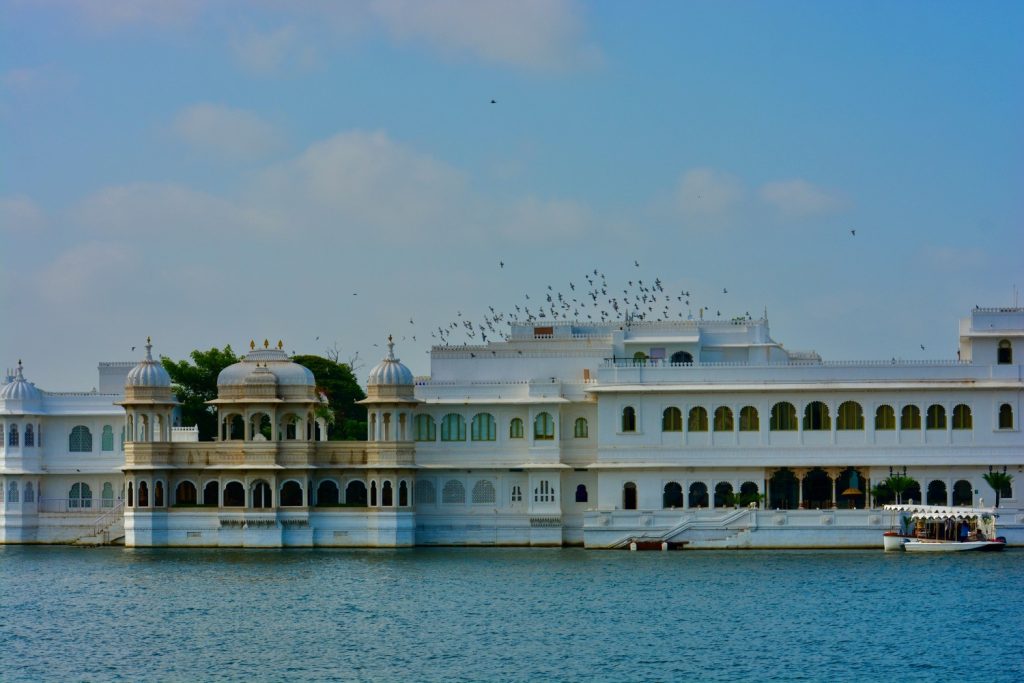
Udaipur, the City of Lakes, is not a city; it’s an experience. Hidden away in Rajasthan’s Aravalli hills, this enchanted land is famous for its beautiful lakes that enhance its royal aura. The sunset on Lake Pichola, a mesmerizing boat ride on Fateh Sagar Lake, or standing at the beauty of Badi Lake is something one cannot miss. The city’s lakes offer peaceful boat rides and breathtaking views. There are popular tourist attractions like the City Palace, Bagore ki Haveli, and Jain Mandir that lie within walking distance of each other. If you’re a tourist hunting for perfect spots, a romantic getaway couple, or just someone who adores nature, Udaipur is the perfect place for you. This guide will lead you through some of the most beautiful lakes in Udaipur. So, let’s dive into the charm of this beautiful city. 1. Lake Pichola: Royal jewel of Udaipur The most famous lake in Udaipur, Pichola Lake is surrounded by historic palaces, ghats, and heritage hotels. Pichola Lake was created in 1362 by a Banjara tribesman and later expanded by Maharana Udai Singh II when he established Udaipur. This lake is known for the stunning Lake Palace and Jag Mandir. Boat rides in Lake Pichola are a must for people who enjoy scenic views. ● Best Time to Visit: October to March. ● Activities: Boating, Photography, Sightseeing. ● Nearby Attractions: City Palace, Bagore Ki Haveli, Jag Mandir. 2. Fateh Sagar Lake: Second largest attraction Fateh Sagar Lake lies northwest of Lake Pichola, surrounded by hills and woodlands. It is known for its blue waters and lush surroundings. This is one of the most famous lakes, which consists of three islands, with Nehru Park being the top attraction. It is one of the must-visit lakes in Udaipur. ● Best Time to Visit: October to March. ● Activities: Photography, Boating. ● Nearby Attractions: Nehru Garden, Moti Magri. 3. Jaisamand Lake: Asia’s Second Largest Artificial Lake Jaisamand Lake, referred to as Dhebar Lake, is Asia’s second largest artificial lake, which offers breathtaking views. The lake is surrounded by marble-carved cenotaphs and palaces on all sides. It’s a perfect boating spot to capture the sunset when the lake turns golden and creates a picture-perfect moment. ● Best Time to Visit: October to March. ● Activities: Boating, Wildlife Exploration. ● Nearby Attractions: Jaisamand Wildlife Sanctuary, Hawa Mahal. 4. Udai Sagar Lake: A Heritage Gem Udai Sagar Lake, one of the major lakes of Udaipur, offers stunning views and a peaceful atmosphere away from the city’s hustle. Udai Sagar Lake looks serene during monsoons, when the region surrounding the lake looks fresh and greener. ● Best Time to Visit: August to March. ● Activities: Photography, birdwatching. ● Nearby Attractions: Udai Sagar Dam. 5. Badi Lake: The Hidden Bliss Badi Lake, also known as Jiyan Sagar, is one of Udaipur’s most underrated yet beautiful lakes. The lake is surrounded by a peaceful stone-laden walkway. It is a perfect spot for a picnic and getaway for nature lovers. ● Best Time to Visit: Monsoon and winter months. ● Activities: Trekking, Swimming, Photography. ● Nearby Attractions: Bahubali Hill. 6. Rajsamand Lake: A Celestial Lake Rajsamand Lake is a stunning artificial lake offering a peaceful environment and beautiful views. Sunrise is the perfect time to come here and see the beautiful scenery. The most majestic attraction of Rajsamand Lake is the nine marble ghats, also called ‘nav chawkis.’ ● Best Time to Visit: Monsoon and winter months ● Activities: Boating, Photography, Exploring Marble Ghats ● Nearby Attractions: Kankroli Temple, Dwarkadhish Temple, Haldi Ghati, and Chetak Samadhi. 7. Dudh Talai: Peaceful Escape Dudh Talai Lake is a small, pretty lake near Lake Pichola surrounded by lush gardens with a stunning sunset view. It is perfect for a peaceful escape in the heart of the city. At the Dudh Talai Lake, visitors can soak in scenic views of Lake Pichola, Lake Palace, and Jag Mandir. ● Best Time to Visit: Monsoon and winter months ● Activities: Boating, photography, sunset viewing, and ropeway ride. ● Nearby Attractions: Manikya Lal Verma Garden, Karni Mata Temple, Lake Pichola. 8. Swaroop Sagar Lake: Soothing Retreat Swaroop Sagar Lake is a small, cozy lake that serves as a link between Lake Pichola and Fateh Sagar Lake. It gives peaceful views, less crowded surroundings, and is an excellent picnic spot. It is a perfect spot to enjoy a cozy and romantic boat ride. ● Best Time to Visit: Monsoon and winter. ● Activities: Boating, Photography, Sightseeing. ● Nearby Attractions: Lake Pichola, Fateh Sagar Lake, Gangaur Ghat, Bagore Ki Haveli. Boat rides and timings: Boat rides on Lake Pichola run from 9 AM to 5 PM daily. Sunset cruises come with premium rates. Here’s what you’ll pay: ● Regular boat rides: Rs. 400 for adults, Rs. 200 for children. ● Sunset cruises: Rs. 700 for adults, Rs. 400 for children. ● Motorboats: Rs. 200 for adults, Rs. 100 for children. Boat rides on Fateh Sagar Lake run from 8 AM to 4:30 PM daily. It has budget-friendly options. Here’s what you’ll pay: ● Regular boat rides: Rs. 15 to 30. ● Motor Boats: Rs. 100 to 200. ● Speed Motorboats: Rs. 200 to 400. Frequently Asked Questions: Q1. Which is the most beautiful lake in Udaipur? Lake Pichola is widely considered the most beautiful lake in Udaipur. It has four islands, including Jag Niwas, the Lake Palace, and offers stunning views of the City Palace and surrounding architecture. Q2. Best lake for boating in Udaipur? Both Lake Pichola and Fateh Sagar Lake are great for boating. Lake Pichola is known for its scenic views of palaces and architecture, while Fateh Sagar Lake has a more serene view of nature. Q3. What is the best time to visit Udaipur’s lakes? The best time to visit Udaipur’s lakes is during sunrise and sunset. Early mornings at Gangaur Ghat over serene views of Lake Pichola, while evenings at Ambrai Ghat over spectacular sunset views. Q4. Are there any hidden gem
Rajasthan: Beyond the Deserts – Wildlife Adventures Unveiled
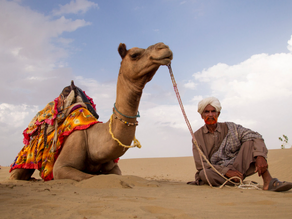
Rajasthan: Beyond the Deserts – Rajasthan is not merely a state of royal palaces and endless golden deserts – it is also the heaven of the wildlife lovers and the adventurers. Pulsating so much in a bid to preach a rare mixture of Rajasthan tourism and clean nature about the traditions, the wilderness adventure in the state. From spotting the majestic Bengal tigers of Ranthambore to witnessing flocks of migratory birds at Keoladeo National Park, this Rajasthan travel guide will take you through the state’s wild side. Whether you’re planning a family trip, a honeymoon, or looking for the best Rajasthan tour packages, this guide will help you create the perfect itinerary and show you the true essence of Rajasthan: Beyond the Deserts for an unforgettable journey. Rajasthan Ranthambore National Park: Home of the Bengal Tigers Ranthambore National Park No Rajasthan trip itinerary is complete without visiting Ranthambore National Park, one of India’s most famous wildlife sanctuaries. It is a home to photographers, nature lovers, and wildlife lovers due to its wild animals, especially Bengal tigers, all of which can be found in this very park. Tigers aside, other types of wildlife you’ll spot include leopards, sloth bears, striped hyenas, wild boars, and marsh crocodiles. The rough park terrain, comprising forest and open lawns, has rendered the park ideal for thrilling jeep safaris. Inclusion of Ranthambore in your Rajasthan tour itinerary would make sure that you get in touch with the wild core of Rajasthan. Ranthambore: Home to diverse wildlife Keoladeo National Park: A Birdwatcher’s Paradise Also known as the Bharatpur Bird Sanctuary, the Keoladeo National Park is a UNESCO World Heritage Site and a must-visit destination for bird enthusiasts. This sanctuary is one of the best places in Rajasthan to witness diverse birdlife in their natural habitat. Migratory birds like Siberian cranes, painted storks, pelicans, and kingfishers flock to this wetland during the winter months, giving it a spectacular view. Mist floating over lakes, a hundred birds screaming, that is the ha-ha of early mornings here. Keoladeo should be part of your Rajasthan tour packages, as it will provide you with an opportunity to relax in nature and a different cultural experience. Bharatpur Bird Sanctuary Bharatpur Bird Sanctuary The most interesting thing about this sanctuary is the amazing range of migratory birds that come in the winter. It is a great place to observe colorful birds, such as rare Siberian cranes, giant pelicans, colorful painted storks, and colorful Kingfishers. You will be engulfed by the sounds of the singing birds and the tranquility of the wetlands as you walk or ride through the well-kept walkways. The photojournalists and lovers of nature found particular beauty in the early mornings, when the mist hovered over the wetlands and flocks of birds started flying above them in perfect sync. You will never forget just how much of a great experience it can be, whether you are an old birder or just simply need a day of taking your feet up and experiencing the natural heritage of the Rajasthan state and the natural biodiversity of the Keoladeo National Park. Sariska Tiger Reserve: Revived Habitat for Tigers Another destination for wildlife lovers not to be missed is the Sariska Tiger Reserve, which is located in the Alwar district. Sariska is renowned for its Bengal tigers, leopards, sambar deer, and chinkaras, and its dry deciduous forests provide an exciting jeep safari experience. At a prominent point here is the historic Kankwari Fort inside the reserve. It is to give you a moneying of history when you come to a kingdom of savage things, which is the very mix of tradition and nature. Sariska represents a compromise between adventure and civilization to the tourist planning a custom-made Rajasthan travel brochure. Sariska Tiger Reserve, Alwar Desert National Park: A Unique Ecosystem Few would have a chance to observe the incredible wildlife in the arid landscapes of Rajasthan, as it is in the Desert National Park, which is near Jaisalmer. The largest area of its kind is the giant arcs of the dunes of dust, the cones of rock, and the ancient salt lakes, and in this respect, it has become one of the most popular tourist destinations for lovers of nature, and it is also known for its exciting elements. The endangered Great Indian Bustard is one of the largest attractions within the park and a beautiful bird due to its conspicuous appearance and towering stature. And it is about this endangered species that conservation becomes a frontier area for Rajasthan, and a kind of tourism for bird watchers of the world. The visit to the Desert National Park is an adventure in itself. You can enjoy a fun-filled jeep safari through the dunes, or you can go on a guided walking tour, where a local guide and naturalist can tell you all about the history and biodiversity of the desert. Surreal quality of the wildlife photography and lifetime memories is created by the dramatic nature of the scenery, especially around sunset or sunrise. Desert National Park & The Great Indian Bustard The endangered Great Indian Bustard is one of the largest attractions within the park and a beautiful bird due to its conspicuous appearance and towering stature. And it is about this endangered species that conservation becomes a frontier area for Rajasthan, and a kind of tourism for bird watchers of the world. The visit to the Desert National Park is an adventure in itself. You can enjoy a fun-filled jeep safari through the dunes, or you can go on a guided walking tour, where a local guide and naturalist can tell you all about the history and biodiversity of the desert. Surreal quality of the wildlife photography and lifetime memories is created by the dramatic nature of the scenery, especially around sunset or sunrise. Tal Chhapar Sanctuary: Blackbuck Haven Tal Chhapar Sanctuary, The BlackBuck reserve Another wildlife paradise, which promises a unique experience within untrodden wildlife paths, is Tal Chhapar
Rajasthan: Guide beyond the Palaces – Exploring the Hidden Gems

Khamma Ghani, fellow explorers! We are now diving deep into the heart of India, exploring the enthralling nation of Rajasthan, it is manner past the palaces that often steal the highlight! Credits: Canva Venture off the beaten path in Rajasthan with our AI-pushed guide. You may think you know Rajasthan – the land of palaces, vibrant fairs, and wealthy records. But nowadays, we are unlocking the secrets and techniques of this magical place, revealing hidden gems in order to go away you in awe. Hidden Gems in Jodhpur: Beyond the Blue City Jodhpur, the Blue City, is well-known for its majestic Mehrangarh Fort and bustling bazaars. But permit me take you beyond the same old traveler spots. Mehrangarh Fort Credits: Freepik Picture this: historic step wells, intricately designed and steeped in records. These architectural wonders now not most effective served as water assets but also as community collecting spaces. Join us as we discover those hidden marvels that regularly cross omitted. Cultural Exploration in Bikaner: Uncover the Authentic Rajasthan Junagarh Fort Credits: Freepik Now, let’s shift our cognizance to Bikaner, a town with a completely unique blend of lifestyle and allure. Beyond the grandeur of Junagarh Fort, there lies a cultural tapestry waiting to be unraveled Credits:Freepik Local markets packed with vibrant colours, aromatic spices, and conventional crafts offer a real flavor of Rajasthan’s authenticity. We’ll immerse ourselves in the hustle and bustle, discovering the soul of Bikaner via its streets and local flavors. Unknown: Off beat Experiences Across Rajasthan But wait, there’s more! Rajasthan has hidden treasures scattered across its landscape. Ever heard of the mystical Abhaneri Step Well? Let’s descend into its depths and wonder at the structure that echoes with tales from centuries in the past. Abhaneri Step well Credits: Freepik Now, believe the serene landscapes of the Keoladeo National Park, a birdwatcher’s paradise tucked far from the bustling towns. Join us on an adventure to these lesser-known places that redefine your notion of Rajasthan, showcasing its diverse splendour past the opulent palaces. Keolado National Park Credits: Freepik Ranakpur Jain Temple, As you approach this architectural masterpiece, you are greeted by a symphony of intricate carvings that seem to dance on the walls, telling tales of devotion and artistry. The temple, dedicated to Adinatha, the first Tirthankara of Jainism, is a sanctuary where spirituality and craftsmanship intertwine seamlessly. Ranakpur jain temple Credits: Unsplash Ranakpur is not just about the temple; it’s a sanctuary of peace surrounded by lush greenery and the soothing melody of nature. The nearby Sadri village offers a glimpse into the local way of life, where the warmth of the people mirrors the golden hues of the desert landscape. Kumbhalgarh Fort Prepare to step into the realm of Kumbhalgarh Fort, where history whispers through ancient stones, and the walls resonate with the tales of valor and mystique. Buckle up for an adventure that transcends time – Kumbhalgarh, where every stone has a story, and every turret hides a secret. Kumbhalgarh Fort Credits: Unsplash This isn’t just a destination it’s an odyssey into the heart of Rajasthan’s majestic past, guarded by the formidable walls of quirkiness and grandeur. Engaging with the Locals And the quality part? Interact with the locals, participate in conventional sports, and get a flavor of the true Rajasthani way of life. It’s no longer only a journey; it’s an immersive cultural enjoy. Credits:Canva Join the Adventure! So, there you’ve got it! Rajasthan isn’t pretty much the palaces; it is approximately the hidden gemstones, the offbeat stories, and the colorful tradition that awaits you. Join us on this exceptional adventure as we explore the unexplored, unlocking the secrets that make Rajasthan genuinely magical. Thanks for tuning in, and remember, the pleasant adventures take place off the overwhelmed route! ????✈️????
Exploring The Exquisite Flavors Of Kerala: A Culinary Odyssey
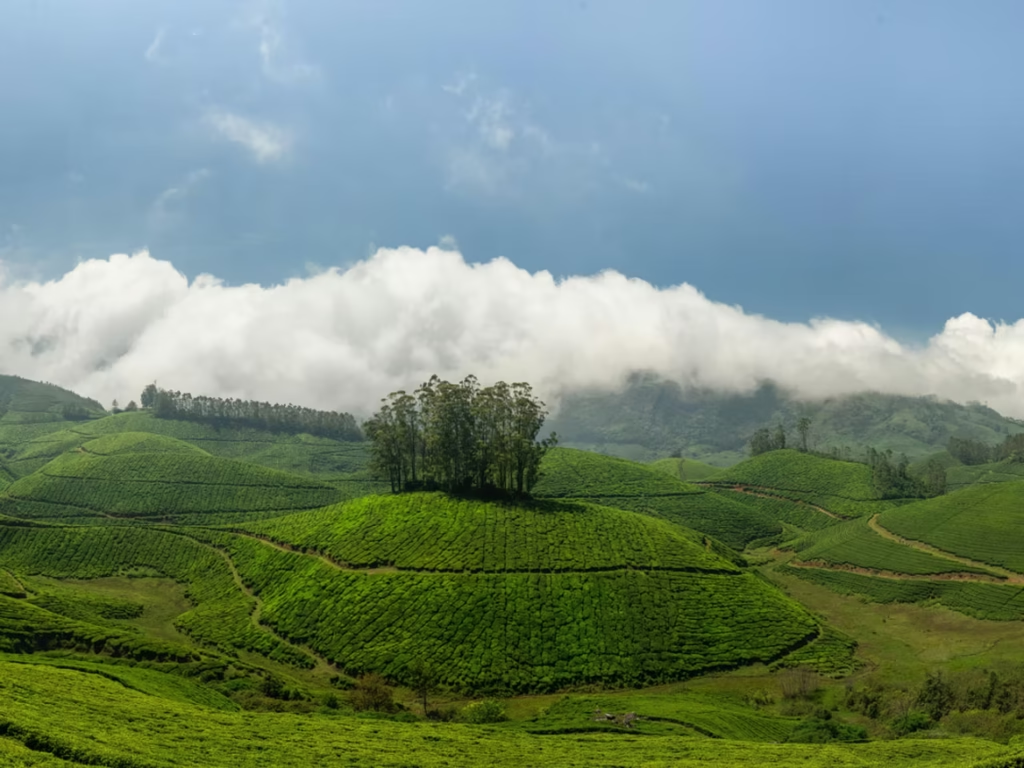
Embark on a gastronomic journey through the flavors of Kerala with our AI-enhanced culinary guide. From traditional spices to coastal delicacies, savor the best of Kerala cuisine. Introduction: The Rich Culinary Heritage Of Kerala Kerala, a state located in the southern region of India, is renowned for its rich and diverse culture, enchanting landscapes and warm hospitality. But one aspect of this beautiful land that often goes unnoticed is its flourishing culinary heritage. The food of Kerala is as captivating and varied as its people, with influences from different cultures dating back to ancient times. From fragrant spices to fresh seafood, every bite in this picturesque state is an explosion of flavors that will leave your taste buds wanting more. Keep reading to know more! Backwaters of Kerala From Sea To Plate: Exploring Kerala’s Coastal Cuisine Kerala’s long coastline along the Arabian Sea has not only blessed it with breathtaking views but also a unique and diverse cuisine that has been influenced by various cultures over centuries. From seafood to coconut-based dishes, Kerala’s coastal cuisine is a true reflection of its rich cultural heritage and natural resources. Kerala Chemmeen (Prawns/Curry) Appam and crab masala Karimeen Pollichathu Oyster Ethakka Thoran A Vegetarian’s Paradise: Taste The Delights Of Onam Sadya This traditional feast is a must-try for any food lover, especially vegetarians. Onam Sadya is a grand meal served during the festival of Onam in Kerala. It consists of an elaborate spread of over 20 different vegetarian dishes, all made with fresh and local ingredients. From flavorful curries to crispy papadums, every dish has its own unique taste and complements each other perfectly. And the best part? It’s all served on a banana leaf, adding a touch of eco-friendliness to this culinary experience. Following are the top 5 mouthwatering dishes part of the Onam sadya spread: 1)Thoran: It is a stir fry vegetable dish made of either cabbage, beans, raw jackfruit or carrot and grated coconut. Thoran 2)Olan: A mixture of white pumpkin, coconut milk and cow peas, olan can be served with steamed rice or red rice. Olan 3)Upperi or Sarkara Varatti: Add a sugary twist to the banana chips and you have upperi. Upperi or Sarkara Varatti 4)Ada Payasam: Ada Pradhaman is a traditional Kerala payasam prepared with jaggery coconut milk and rice ada or rice flakes. Ada Payasam 5) Puli Inji: Puli Inji is a sweet and sour ginger pickle made of tamarind, ginger and jaggery, served as an appetiser in Sadhya. Puli Inji The Art Of Pickling And Preserving In Kerala One of the most beloved aspects of Kerala’s cuisine is the art of pickling and preserving. This traditional method of food preservation has been passed down through generations in Kerala, resulting in an array of flavors. The process involves using a variety of spices, oils, and vinegars to create mouth-watering pickles that can be enjoyed for months on end. From fiery mango pickle to tangy lemon pickle to sweet and spicy mixed vegetable pickle, there is no shortage of options when it comes to pickled delights in Kerala. These special preserves not only add flavor to meals but also have numerous health benefits as they are packed with probiotics and essential nutrients.. Pickles Influences From Around The World: Fusion Dishes In Kerala’s Cuisine One of the most unique aspects of Kerala’s cuisine is its fusion dishes. The state, situated in the southern part of India, has been a major trading hub for centuries and has welcomed influences from around the world. This is reflected in its cuisine, which blends Indian ingredients and cooking techniques with flavors from various cultures such as Chinese, Portuguese, Dutch, and Arab. These fusion dishes add an exotic touch to the already diverse cuisine From spicy and tangy curries to mouth-watering seafood delicacies, the fusion dishes in Kerala are a must-try for food enthusiasts looking to embark on a culinary odyssey through this beautiful state. 1) Meen Moilee: A coconut milk-based fish curry with influences from Portuguese and Dutch cuisines, featuring Kerala’s signature spices. Meen Moilee 2) Kerala Beef Fry: Marinated beef stir-fried with onions, spices, and curry leaves, reflecting a blend of Kerala’s traditional flavors with Portuguese and Dutch influences. Kerala Beef Fry 3) Kerala Prawn Curry: Prawns cooked in a tangy coconut milk gravy infused with spices, showcasing the fusion of Kerala’s culinary traditions with Dutch and Arab influences. Kerala Prawn Curry 4) Kerala Chicken Stew: A creamy chicken stew with potatoes, carrots, and coconut milk, combining Kerala’s spices with Portuguese and Dutch culinary techniques. Kerala Chicken Stew 5) Kerala Egg Roast: Hard-boiled eggs cooked in a spicy onion-tomato gravy, representing the fusion of Kerala’s flavors with influences from Chinese, Portuguese, and Arab cuisines. Kerala Egg Roast Desserts, Sweets, And Snacks: An Exploration Of Kerala’s Sweet Tooth One can’t talk about Kerala’s cuisine without mentioning its irresistible sweet treats. From traditional desserts passed down through generations to modern snacks influenced by global flavors, Kerala’s love for sweets knows no bounds. Unniyappam: Sweet and fluffy rice flour fritters, flavoured with jaggery and bananas, a beloved snack during festivals. Palada Payasam: A creamy rice pudding cooked in milk, flavoured with cardamom and garnished with nuts, a must-have dessert for celebrations. Nei Appam: Crispy, golden-brown pancakes made with rice flour, coconut, and jaggery, a delightful treat enjoyed year-round. Kozhikodan Halwa: A chewy and aromatic sweet made from wheat, ghee, sugar, and nuts, a specialty of Kozhikode’s culinary heritage. Ada Pradhaman: A rich and decadent dessert made with rice flakes, coconut milk, jaggery, and garnished with fried coconut pieces, a staple during Onam festivities. Unniyappam Palada Payasam Kozhikodan Halwa As we come to the end of our culinary adventure in Kerala, we’ve experienced a rich blend of traditional flavors. In Kerala, food is not just a means of
Kerala’s Green Getaway: Sustainable Tourism
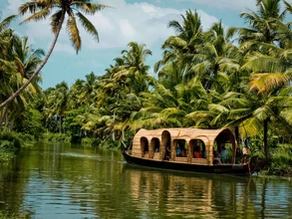
Kerala, also known as ‘God’s Own Country’, is a paradise for nature lovers and adventure enthusiasts. With its lush green landscapes, serene backwaters, and diverse wildlife, Kerala offers a unique opportunity to experience sustainable tourism. Credits: Unspalsh Kerala’s coastline is not only breathtakingly beautiful but also a crucial ecosystem that requires protection. By embracing sustainable tourism practices, Kerala aims to conserve its natural resources and protect its rich cultural heritage. It focuses on promoting eco-friendly activities and responsible travel to ensure the preservation of its pristine environment for future generations. One of the key aspects of sustainable tourism in Kerala is the promotion of green destinations. These destinations are carefully managed to minimize the negative impact on the environment while providing visitors with an unforgettable experience. From the tranquil backwaters of Alleppey to the breathtaking beauty of Munnar. Kerala offers a range of green destinations that showcase the state’s natural wonders. By choosing to explore these green destinations, you become a part of Kerala’s efforts to promote sustainable tourism. Whether you choose to cruise along the backwaters of Alleppey or embark on eco-friendly adventures in Munnar, you will be rewarded with unforgettable experiences and a deeper appreciation for the importance of sustainable travel. Alleppey Backwater Cruise: A Tranquil Journey One of the highlights of sustainable tourism in Kerala is the Alleppey backwater cruise. As you glide through the backwaters on a traditional houseboat, you can witness the daily life of the local communities who depend on these waterways for their livelihood. You can observe the traditional fishing techniques, see the vibrant birdlife, and marvel at the lush green landscapes that surround the backwaters. The Alleppey backwater cruise is not just a visual treat; it also offers a unique opportunity to experience the local culture and cuisine. You can savor traditional Kerala dishes prepared using fresh local ingredients and enjoy the warm hospitality of the boat crew, who will ensure that your journey is comfortable and memorable. By choosing the Alleppey backwater cruise, you support sustainable tourism practices that promote the preservation of the backwaters and the well-being of the local communities. Backwaters of Alleppey, Credits – Unspalsh Munnar Eco-Friendly Adventures: Embracing Nature’s Beauty If you are an adventure enthusiast and a nature lover, Munnar is the perfect destination for you. This picturesque hill station in Kerala offers a range of eco-friendly adventures that allow you to embrace the beauty of nature while minimizing your impact on the environment. From trekking through tea plantations to exploring the stunning waterfalls and wildlife sanctuaries, Munnar offers a wide range of outdoor activities that cater to all levels of adventure seekers. You can embark on guided hikes to the top of the hills, where you will be rewarded with panoramic views of the surrounding valleys and mountains. Munnar is also known for its tea estates, and you can learn about the tea-making process by visiting the tea factories and plantations. Experience the aroma of freshly brewed tea and taste the flavors of Kerala’s famous beverage. By choosing eco-friendly adventures in Munnar, you actively contribute to the sustainable development of the region. So, whether you choose to trek, cycle, or simply explore the natural beauty of Munnar, you can do so knowing that you are supporting sustainable tourism in Kerala. Munnar, Credits – Unspalsh Preserving Kerala’s Cultural Heritage Through Sustainable Tourism Kerala is not just a land of natural beauty; it is also rich in cultural heritage. Through sustainable tourism practices, Kerala aims to preserve its cultural traditions and promote responsible travel that respects the local communities. By engaging in activities that promote cultural preservation, visitors can gain a deeper understanding of Kerala’s history, traditions, and way of life. Preserving Kerala’s cultural heritage also involves supporting local communities and their traditional livelihoods. In order to have an immersive travel experince and to better understand the local culture, heritage and poeple you can: Explore ancient temples and traditional art forms Participating in local festivals and cuisin—–e Stay in eco-friendly accommodations Purchase localy crafted souvenirs Culture of Kerala This way you can not only have an immersive travel experience but also directly contribute to the economic well-being of the local communities and help preserve their way of life. Sustainable tourism not only ensures the preservation of Kerala’s cultural heritage but also provides a more authentic and travel experience for visitors. By connecting with the local communities you can create meaningful connections and memories that will last a lifetime. Community Engagement and Responsible Tourism in Kerala One of the key principles of sustainable tourism in Kerala is community engagement. By actively involving the local communities in the tourism industry, Kerala aims to empower them and create a positive impact on their lives. Through responsible tourism practices, visitors can support the economic development of the local communities. Few ways in which you can contribute as well. By choosing to stay in homestays or community-owned accommodations, you directly support the livelihoods of the local people and gain a deeper understanding of their way of life. By participating in traditional art and craft workshops to learning about sustainable farming practices, these initiatives provide a unique opportunity to learn and exchange cultural knowledge. So, when you visit Kerala, take the time to engage with the local communities and support responsible tourism practices. By doing so, you become a responsible traveler who not only enjoys the beauty of Kerala but also leaves a positive impact on the lives of the local people. Planning a trip to Kerela soon? This might help, click here.
Rajasthan: 10 Royal destinations at the Rajas’ abode, experiencing royalty
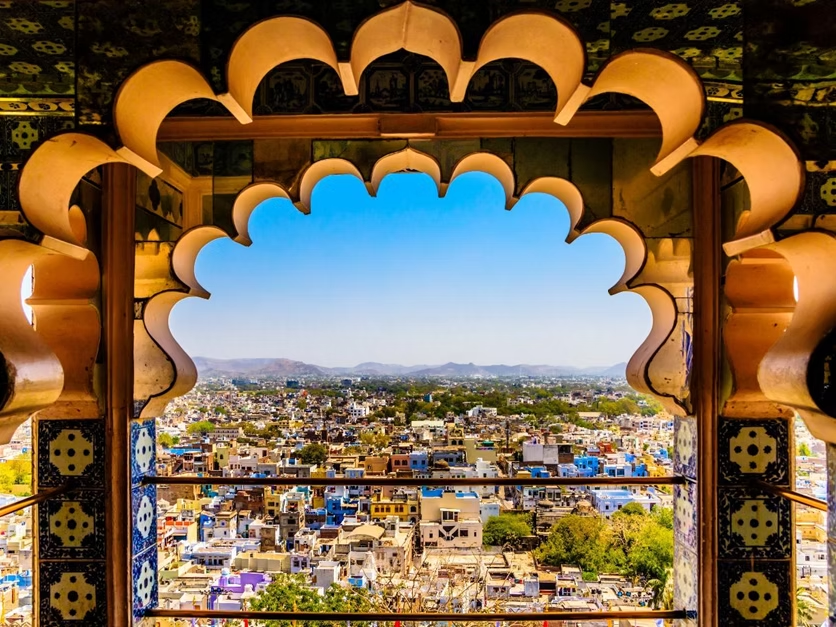
Rajasthan, a historical odyssey welcoming us to unveil the reminiscent of Historical kings and queens. Tag along with us and come and unravel the rich historical background of this state in the classical journey, to show its breath-taking palaces and fascinating culture. By means of our AI designed travel itinerary you are going to make the trip of insight and full-line immersion into the royal splendor of Ramayana and of the heroes’ valor and traditions. Credits: Unsplash How far would you journey back to the past to unravel the fascinating centuries of humanity’s existence, if you had a chance travel back in time? Walking through the ancient historical memorials that name old scars on Rajasthan’s landscape. From the once reputed 1. Mehmandar fortress in Jodhpur Pic: Mehmandar fortress Credit: Unsplash 2. To the heavenly Amber fort in Jaipur, The seepage from the history of unspeakable past, come face-to-face with the architectural wonders that have remained the silent witnesses of the region’s glorious past. Pic:Amber Fort Credit: Unsplash 3. Udaipur Palace Tour: This is the land of Queens and Kings but the one and only love can prevail. Our forthcoming visit is Udaipur – the City of Lakes, a place where you will find majestic palaces and the feeling of romance in the air. Experience the splendor of the City Palace on 4. Lake Pichola’s Banks and indulge yourself in its attractions. Beautifully designed buildings, grand suites and fantastic surrounding views make for an eye-opening palace tour. Don’t forget to add the experience of the beautiful 5. Mughal Gardens of Saheliyon Ki Bari and Jag Mandir into your itinerary, as we continue to unravel the lifestyle of the proud Rajput rulers. Pic: Pinchola Lake Credits: Unsplash 6. Jaipur Cultural Experiences: The details of course include Colors, Crafts, and Cuisine. On our way to Jaipur, the Pink City, hold tight to your enthusiasm so that you can go through a cultural excursion. Plunge into the hustle and crowding of – 7. Johari and Bapu markets Made of scents of spice and eyes with vibrant fabrics. Practical encounter the work of talented artists, who made and pass on elaborate labors involving generations. Credits:Unsplash 8. Chokhi Dhani village resort is famous because it is all about flavor and the culture of Rajasthan. The cultural presentations and warmth of hospitality in Chokhi Dhani will engage you into its communal feeling and remain eternally memorable. Pic: Chokhi Dhani Credits: Unsplash 9. Alsisar Mahal A mesmerizing metropolis inside the heart of Rajasthan. Uncover the splendors of Alsisar Mahal, a 17th-century palace-turned-resort, as it weaves testimonies of bygone royalty. Dive into the vibrant streets embellished with colorful havelis, and partake in a arms-on turban tying workshop for a taste of regal Rajasthani tradition. Pic: Alsisar Mahal Credits: Unsplash The place is located only at a distance of 4 hours from Gurgaon/Amer/Jaipur. Can be counted for a one day short visit as well. 10. Lodhruva: The desert’s lost kingdom Embark on a journey to Lodhruva, an ancient oasis in the coronary heart of Thar Desert. Unearth the mystique of its ruined temples, whispering memories of affection and loss. Feel the desolate tract winds weave thru time as you explore the regal echoes of Lodhruva’s past. Conclusion: Share your royal moments. While journey through the royal majesty of Rajasthan marks it’s end, on our behalf we would like to ask you to kindly share the biggest and unforgettable highlights of the journey. Credits: Unsplash Have you portrayed the hypnotizing structures of Mehrangarh fort or felt the allure of majestic palaces of Udaipur by the lakeside? For example, you could have chosen a dish that you had once seen on a food show, and now you want to reproduce it at your house. Leave your reviews, biographies, and general tips in the comments part. Together, we’ll build a nucleus of the fellow seaside creatures, everyone enriches the tale with their own thing. Credits: Freepik As you wind up this virtual expedition, we would like to say that packing your bags and experience Rajasthan in real is a perfect idea to fly until you find your treasures. Upon this journey of yours, may you be filled with wonder, discovery, and vigour of the Royal Palace until the last instant! Khadi Khamma!
